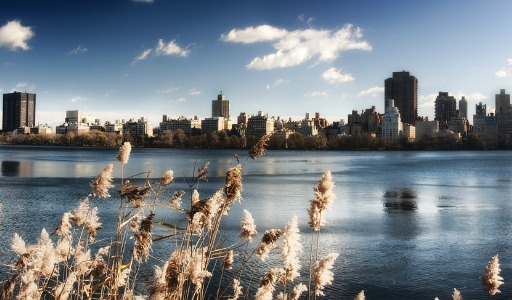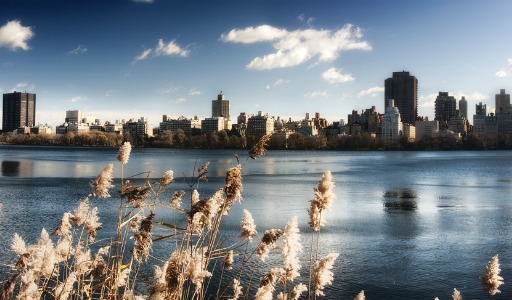 New York City.Photo: Werner KunzCross-posted from Natural Resources Defense Council.
New York City.Photo: Werner KunzCross-posted from Natural Resources Defense Council.
For a long time, America’s environmental community celebrated wilderness and the rural landscape while disdaining cities and towns. Thoreau’s Walden Pond and John Muir’s Yosemite Valley were seen as the ideal, while cities were seen as sources of dirt and pollution, something to get away from. If environmentalists were involved with cities at all, it was likely to be in efforts to oppose development, with the effect of making our built environment more spread out, and less urban.
We’ve come a long way since then, if still not far enough. We were and remain right to uphold nature, wildlife, and the rural landscape as places critical to celebrate and preserve. But what we realize now, many of us anyway, is that cities and towns — the communities where for millennia people have aggregated in search of more efficient commerce and sharing of resources and social networks — are really the environmental solution, not the problem: The best way to save wilderness is through strong, compact, beautiful communities that are more, not less, urban and do not encroach on places of significant natural value. As my friend who works long and hard for a wildlife advocacy organization puts it, to save wildlife habitat we need people to stay in “people habitat.”
For our cities and towns to function as successful people habitat, they must be communities where people want to live, work, and play. We must make them great, but always within a decidedly urban, non-sprawling form. As it turns out, compact living — in communities of streets, homes, shops, workplaces, schools, and the like assembled at a walkable scale — not only helps to save the landscape; it also reduces pollution and consumption of resources. We don’t drive as far or as often; we share infrastructure. While recent authors such as Edward Glaeser and David Owen are sometimes excessive in extolling the virtues of urban density without giving attention to the other things that make cities attractive and successful, they are absolutely right that city living reduces energy consumption, carbon emissions, and other environmental impacts.
A lot of my professional friends are committed urbanists as well as committed environmentalists. We understand the environmental advantages of urban living so thoroughly that we take it for granted that other people do, too. But we make that mistake at our — and the planet’s — peril. The increased development and maintenance of strong, sustainable cities and towns will not happen without a concerted effort.
A lot is riding on the outcome: 83 percent of America’s population — some 259 million people — live in cities and their surrounding metropolitan areas. Somewhat astoundingly (and as I have written previously), 37 of the world’s 100 largest economies are U.S. metros. New York, for example, ranks 13th, with a $1.8 trillion economy equivalent to that of Switzerland and the Netherlands combined; Los Angeles (18th) has an economy that is bigger than Turkey’s; Chicago’s (21st) is larger than Switzerland’s, Poland’s, or Belgium’s.
With so much population and economic activity, it can be no wonder that our working and living patterns in cities and suburbs have enormous environmental consequences, both for community residents and for the planet. And the implications are going to intensify: Over the next 25 years, America’s population will increase by 70 million people and 50 million households, the equivalent of adding France or Germany to the U.S. With a combination of building new homes, workplaces, shops, and schools and replacing those that will reach the end of their functional lives, fully half the built environment that we will have on the ground in 25 years does not now exist.
These circumstances provide not just a formidable challenge but also a tremendous opportunity to get things right. Unfortunately, past practices have done a lot of damage, particularly in the latter half of the 20th century, when America severely disinvested our inner cities and traditional towns while population, investment, and tax base fled for (quite literally) greener pastures. The result, as we now know all too well, has been desecration of the natural and rural landscape while leaving behind decaying infrastructure, polluted air and waterways, and distressed populations.
Older cities and towns with shrinking revenues did what they could, but critical issues such as waste, public transportation, street and sidewalk maintenance, parks, libraries, and neighborhood schools — issues where attention and investment could have made a difference — were back-burnered or neglected altogether. Meanwhile, sprawl caused driving rates to grow three times faster than population, sending carbon and other emissions through the roof while requiring still more costly new infrastructure that was built while we neglected the old.
We cannot allow the future to mimic the recent past. We need our inner cities and traditional communities to absorb as much of our anticipated growth as possible, to keep the impacts per increment of growth as low as possible. And, to do that, we need cities to be brought back to life, with great neighborhoods and complete streets, with walkability and well-functioning public transit, with clean parks and rivers, with air that is safe to breathe and water that is safe to drink.
This, I believe, leads to some imperatives: where cities have been disinvested, we must rebuild them; where populations have been neglected, we must provide them with opportunity; where suburbs have been allowed to sprawl nonsensically, we must retrofit them and make them better. These are not just economic and social matters: these are environmental issues, every bit as deserving of the environmental community’s attention as the preservation of nature.



